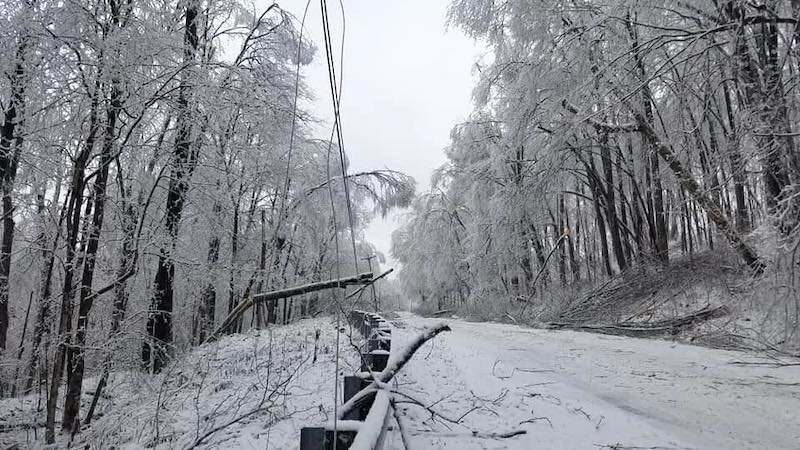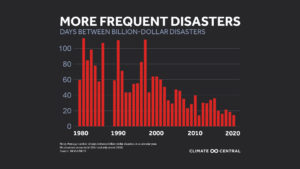
Tennessee has racked up a hefty bill this year thanks to weather and climate disasters.
Since January, the state has been impacted by six multi-state, billion-dollar disasters, according to new data from the National Oceanic and Atmospheric Administration.
In February, an Arctic air mass dumped snow, sleet and ice across Tennessee. That cost as much as $500 million, including insurance claims.
Then there came three severe storms. Tornadoes touched down on March 24 and 25, and a few days later, flash flooding, hail and strong winds damaged the Nashville area. In May, another thunderstorm with tornadoes impacted the state. Together, these three storms cost upwards of $1 billion. (Tennessee’s August flood, which earned a federal disaster declaration, is not counted among these storms. That storm impacted a relatively small area, and the economic impacts are currently estimated at closer to $10 million.)
In August and September, inland impacts from tropical cyclones caused as much as $250 million in damages across the state.
Climate change is making billion-dollar disasters more frequent
Nationwide, this year could be on track to break last year’s record of 22 different billion-dollar weather and climate disasters. Thus far, there have been 18 events this year.
But the cost is already higher: the disasters have collectively caused $104.8 billion in damages, and there have been 538 fatalities, which is twice the number killed in 2020.

Since 1980, Tennessee has been impacted by 90 individual billion-dollar disasters. Severe storms account for the majority, followed by drought, winter storms and tropical cyclones.
Disaster frequency differs year to year locally. In Tennessee, the years 2010 and 2020 had damages totaling between $2 and $5 billion. But 2010 only had one disaster — the historic May flash flood — while 2020 had nine disasters.
The national figures are trending upwards–and are expected to further increase with rising global temperatures. An analysis from Climate Central shows the average time between billion-dollar disasters dropped from 82 days in the 1980s to 18 days on average between 2016 and 2020.


